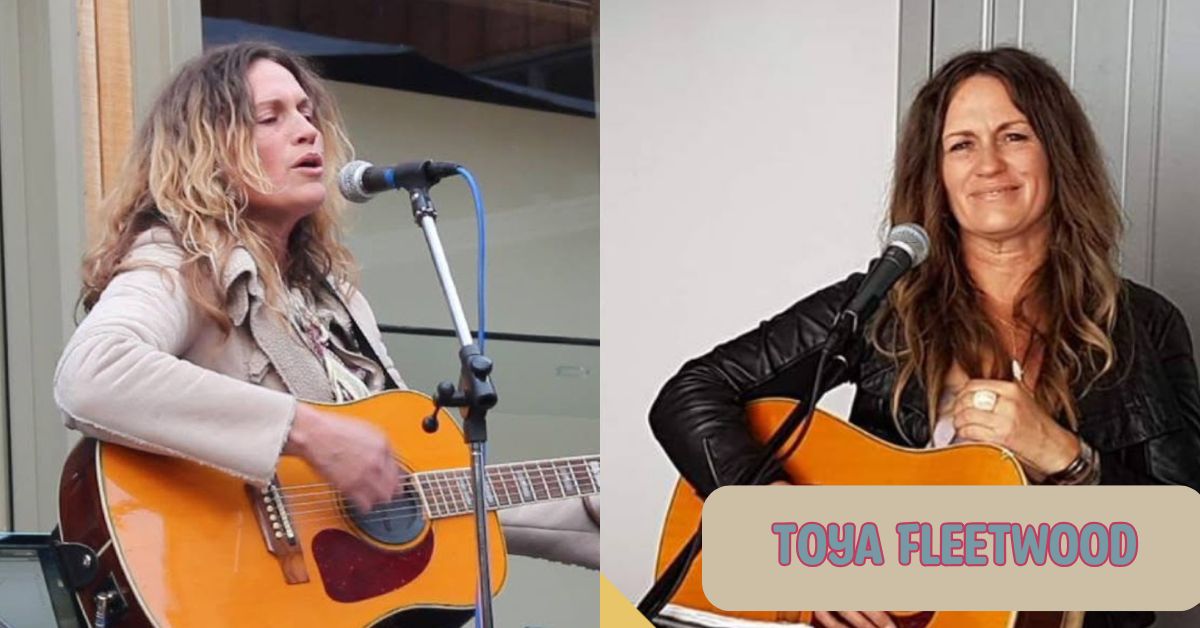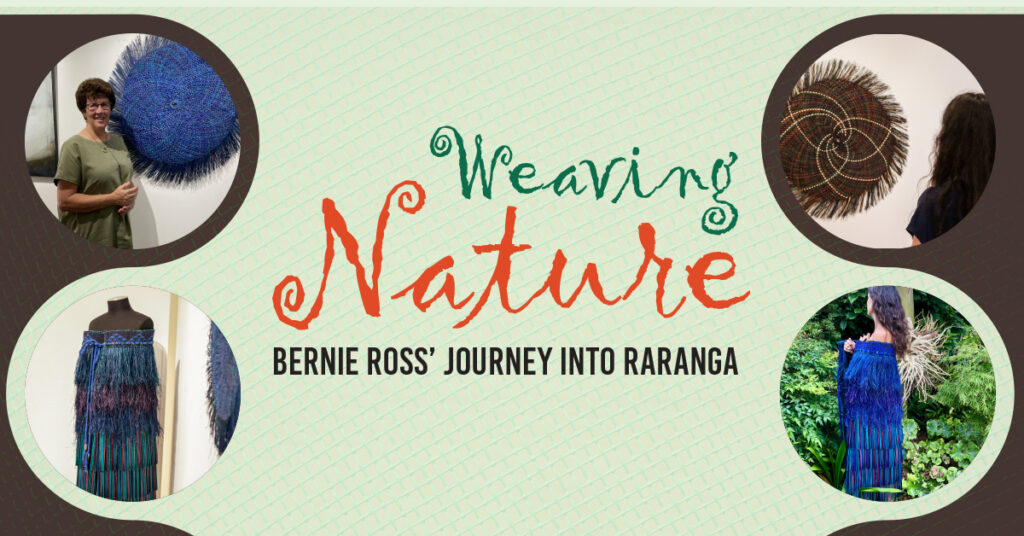
When I first met Bernadette (Bernie) Ross while working at Creative Coromandel, I was immediately drawn to her deep passion for the arts, her friendly warmth and her sharp wit!
It wasn’t until I visited her in Whangamatā in 2021, where she was exhibiting local artists’ work alongside her own, that I really started to understand the depths of her talent as a kairaranga – weaving artist. Three years later, we’re still connected, and long overdue for a kōrero about her raranga (weaving) journey!
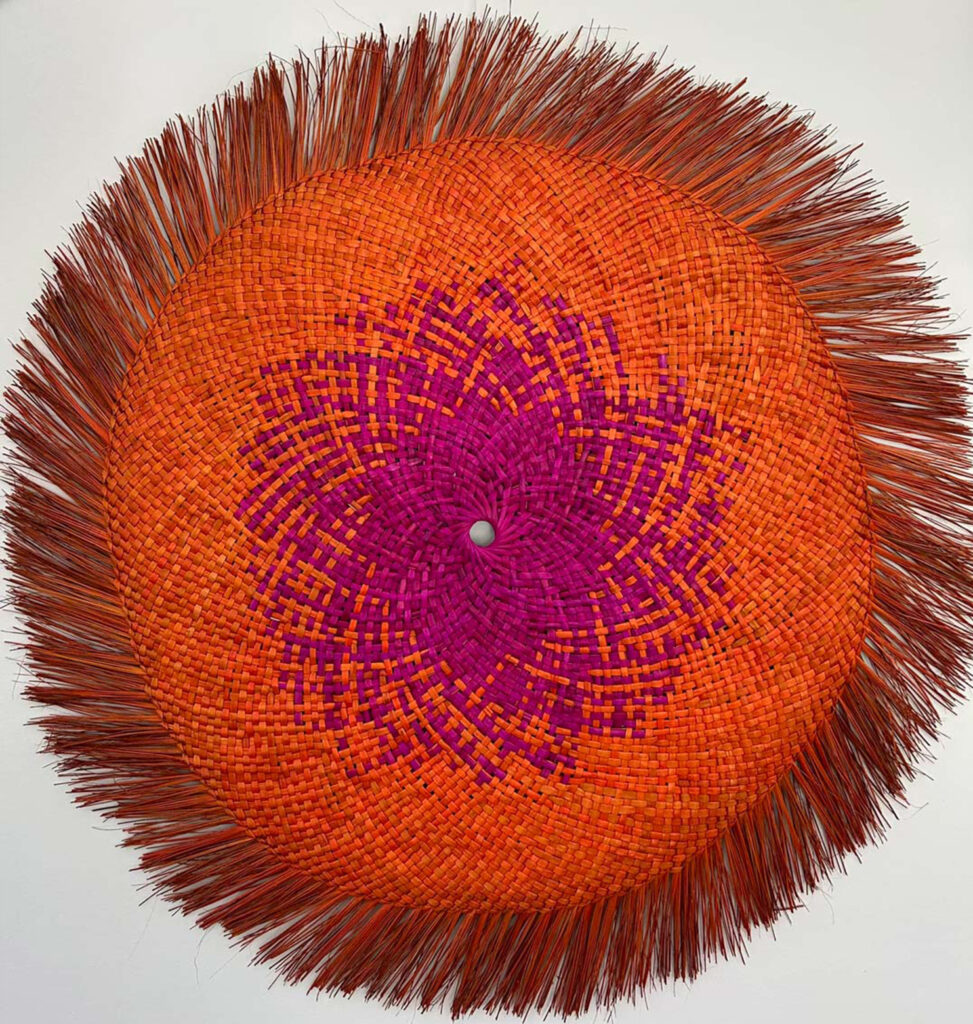

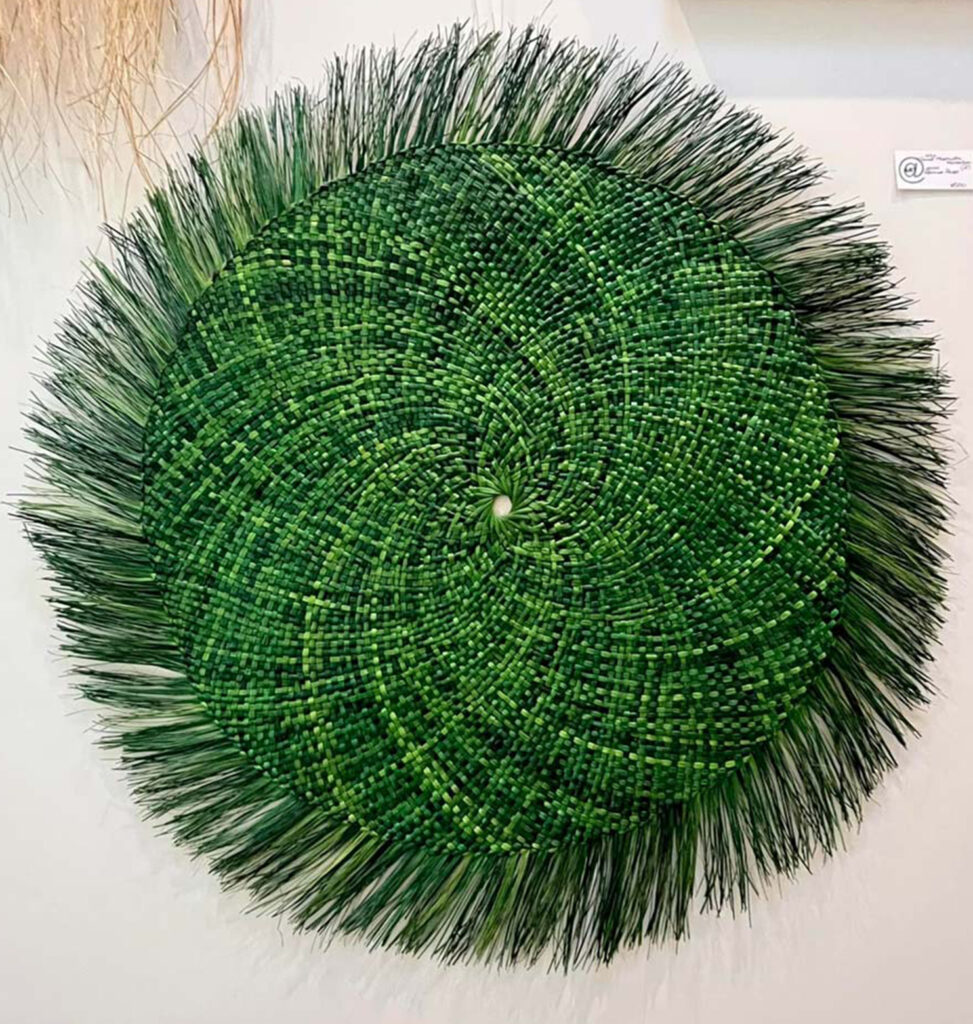
Bernie grew up in a large family in Manurewa, South Auckland, one of nine children, with Irish, English and Spanish heritage. Her family owned a farm and from a young age she was taught to care for and respect the natural environment. She recalls her father pointing out the stand of kauri trees at the back of the farm, saying they needed protection because they were special. “He understood the land, my Dad, and appreciated what it was and how to look after it”.

At age 24 she moved to the UK, living in West London briefly, before moving to Oxfordshire, where she got married and started a family. After having kids, she began a landscaping and gardening business, and this carried through to her return to Aotearoa New Zealand in 2002, where she settled in Tauranga Moana. Sadly an unfortunate back injury in 2010 meant closing the business, and it was then that she began her raranga journey. “I remember being at the Pitt Rivers Museum in England, and they had a huge Native American war bonnet, the bonnets that chiefs wore – it was a metre and a half high. I remember admiring the weaving and the indigenous knowledge behind it, and that stayed with me, for a long, long time”. She also remembers her grandmother embroidering priests’ vestments – a creative inclination that seems to have passed to her. She’s the only one in her family who has pursued a creative career.
Her curiosity piqued, Bernie visited the library for books on raranga and the librarian recommended a visit to the Te Wānanga o Aotearoa ki Tauranga Moana campus. The next four years were spent learning under the tutelage of renowned master kairaranga, Bibbins Tangitu, for a Bachelor of Māori Art degree. Bibbins had taught raranga for over 40 years, gaining her skills at Tutereinga Marae in Te Puna, just outside of Tauranga, and is respected for her work with piupiu (skirt) and kete (basket). Bernie recollects the inclusivity that Bibbins cultivated in the classroom, insisting that regardless of who you were (Māori or non-Māori), the desire to learn and uphold the sacred tikanga of raranga is what mattered. “She was a wonderful weaver but also a wonderful woman, a real leader in Te Puna.”

Learning raranga was life changing for Bernie. She learned about Te Ao Māori, how to be kaitiaki (guardian) to taiao, how to recite pepeha, and the tikanga of harvesting and preparing harakeke (flax) for weaving. Māori view the harakeke plant as a whānau. The rito (central shoot) is the child, protected by āwhi rito (its parents) on either side. These core parts are never harvested. Only outer leaves, like tūpuna (grandparents) are taken. This sustainable practice ensures future generations of harakeke by protecting the plant’s ability to reproduce.

In the third year, she sold a kete at a local cafe in Tauranga. “At that point I realised I could possibly make some pieces and sell them, and it just grew from there.”
After graduating in 2013 she moved to Whangamatā, where the natural environment informed her brightly coloured pieces – she takes photos whenever inspiration strikes.
“When we first moved to Whangamatā, I would go fishing with a friend. We’d be sitting at sunset, and the light on the water as the sun sets changes rapidly. I remember looking at that colour change, and thinking ‘I’m going to work with that’, and that was how I made the blue porohita (circle).”
Māori traditionally use natural dyes derived from paru/swamp mud, tānekaka bark and raurēkau (coprosma) to colour harakeke; however, Bernie utilises modern dyes formulated for natural fibres, often mixing colours for specific shades. She uses a harakeke variety that is well suited to flat work and kete*, and has started to propagate it at home. Raranga is time intensive, requiring several weeks to prepare the harakeke, and then several more weeks (or months!) to weave. Bernie creates shapes that work well as wall hangings, sometimes incorporating a pattern like the outline of the puāwananga (native white clematis) which only flowers for three weeks on the Coromandel.
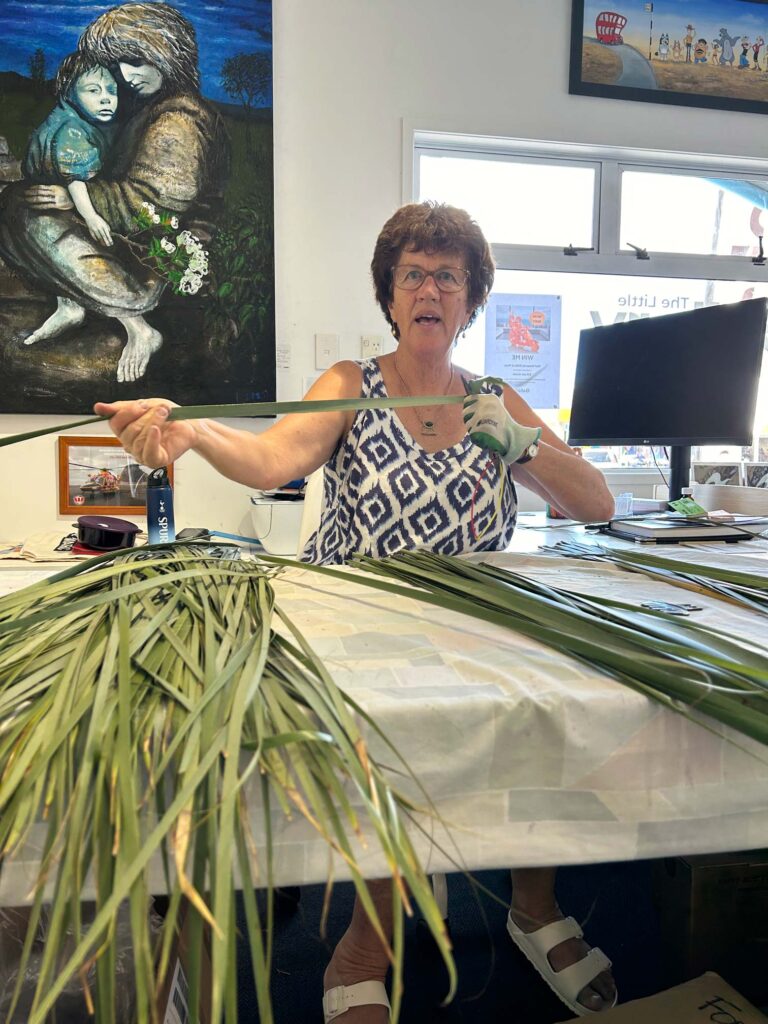
In 2013, she joined the Whangamatā Arts Collective and spent several years as the Chairperson and a Trustee, growing the collective and initiating events like the annual Harcourts Challenge and the Easter Art Trail. In 2019, she became a Creative Coromandel Trustee, a role she continues today.
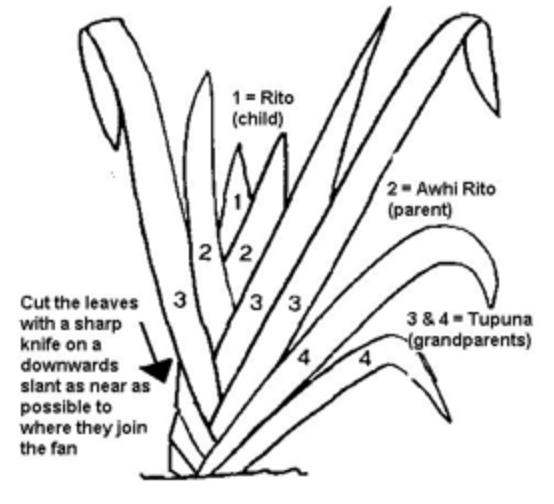
Raranga is steeped in indigenous knowledge and there are many cultural and spiritual elements associated with it. Bernie upholds and shares this legacy by hosting weaving workshops four times a year, for beginners from all walks of life. “It’s really important that people understand why we do what we do with flax. The tikanga are both practical and spiritual reasons for why we need to do things in a certain way.”


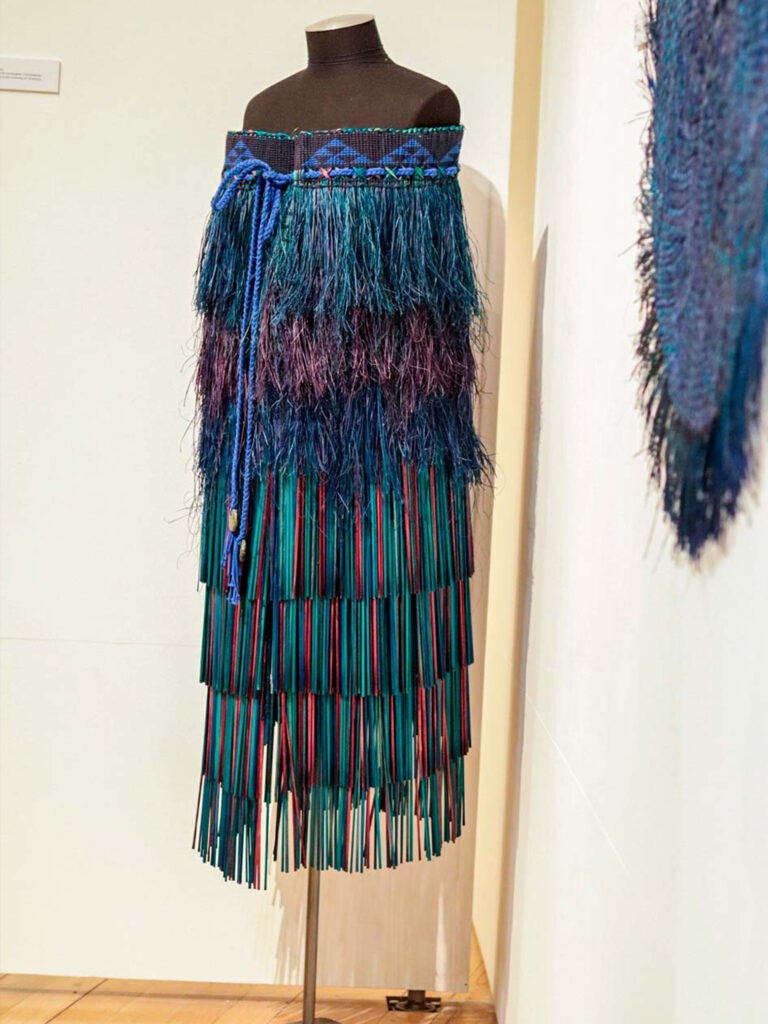
Bernie exhibits her work locally and nationally, and regularly sells commissions. “When it starts to happen it can snowball, but it’s taken ten years to get to this point! I didn’t think I was good enough, and that caused trouble in my early weaving years. I think artists generally suffer from that. So I try to do what I’m good at and what I enjoy doing, which is the most important thing – because if you don’t enjoy it, you will never weave. You’ve got to love it.”

You can check out Bernie’s raranga at The Little Gallery in Tairua and Whangamatā! Her next 1-day raranga workshops are on 19th & 20th July 2024 – e-mail bazbern@outlook.com to book a space and follow her on Facebook for more workshop dates and upcoming exhibitions!
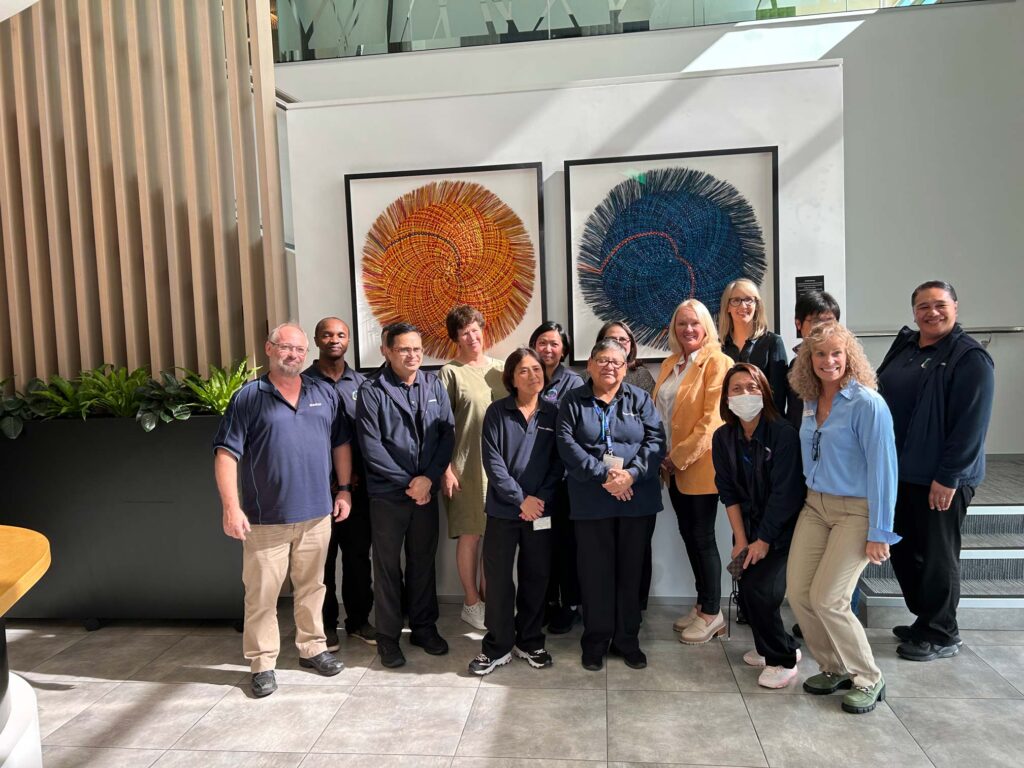
Words by Anusha Bhana
Coromind: Coromandel’s Collaborative Magazine

Help us take Coromind Magazine to new heights by becoming a member. Click here
Change the Weather for Your Business: Advertise with Us.
Advertise your business in the whole Hauraki Coromandel in the coolest Coromandel Art Magazine, from Waihi Beach/Paeroa /Thames up to the Great Barrier Island.
Advertise Smarter, Not Harder: Get in Touch



